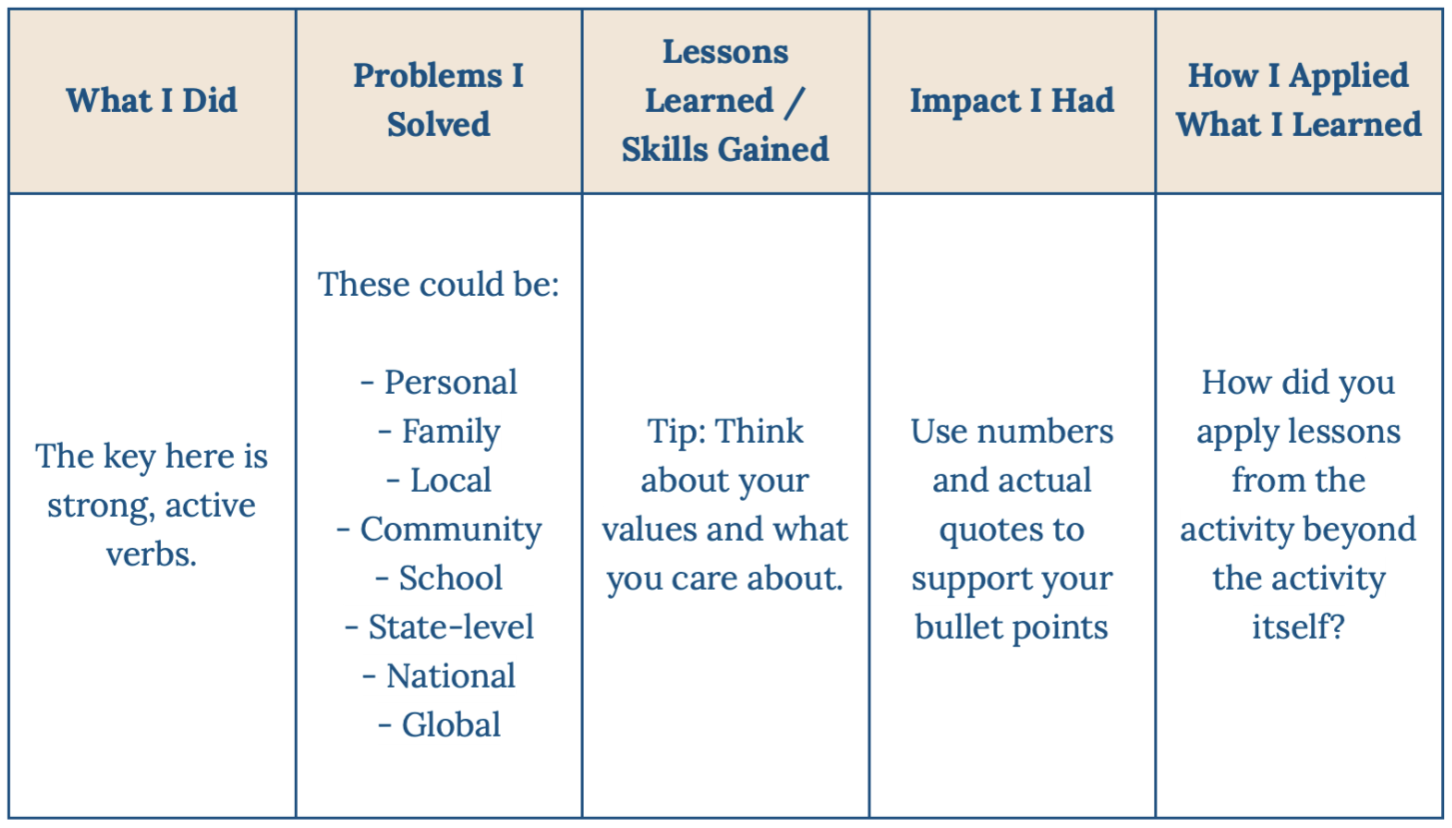How to Tackle the UC Personal Insight Questions
You’re probably familiar with supplemental essays, but the University of California (UC) admissions people refer to these as personal insight questions (not essays). This is because most students associate “essay” with writing an academic essay, which is really not what the UCs are looking for.
Before we dive in, what are the UC Personal Insight Questions (aka PIQs)?
For those who are interested in applying to the UCs, you will need to answer four out of eight prompts below. Each response should be around 350 words.
Describe an example of your leadership experience in which you have positively influenced others, helped resolve disputes or contributed to group efforts over time.
Every person has a creative side, and it can be expressed in many ways: problem-solving, original and innovative thinking, and artistically, to name a few. Describe how you express your creative side.
What would you say is your greatest talent or skill? How have you developed and demonstrated that talent over time?
Describe how you have taken advantage of a significant educational opportunity or worked to overcome an educational barrier you have faced.
Describe the most significant challenge you have faced and the steps you have taken to overcome this challenge. How has this challenge affected your academic achievement?
Think about an academic subject that inspires you. Describe how you have further this interest inside and/or outside of the classroom,
What have you done to make your school or your community a better place?
Beyond what has already been shared in your application, what do you believe makes you stand out as a strong candidate for admission to the University of California?
Okay, we get it. These questions are aimed to get a better sense of your skills, qualities, values, interests, and (maybe) life challenges. They want to learn more about who you are beyond just the grades and test scores. But what are UC admissions looking for, specifically?
The good news is that the UCs actually list what they look for on their website. When they read your PIQs, they are essentially looking for these 13 factors, and evaluating your application in a holistic manner:
Grade-point average (GPA)
Performance in and number of courses beyond minimum A~G requirements
UC-approved honors and advanced courses
Eligibility in the Local Context (ELC) – CA residents only
Quality of senior-year program of study
Academic opportunities in California high schools
Outstanding performance in one or more academic subject areas
Achievements in special projects
Improvement in academic performance
Special talents, achievements and awards
Participation in educational preparation programs
Academic accomplishments in light of life experiences
Geographic location
I’ve italicized and bolded ones that probably can’t be glimpsed from your application, and those are the ones you should focus on when choosing your PIQ topics.
Now that you know what admission readers are looking for, how do you write your personal insight questions?
Step 1 - Find your PIQ topic
This is a great time to just whip out your activities list, which I hope you’ve already done. If you haven’t, you can learn how to do it here.
Go through your activities and see which ones would show four different sides of you? By different sides, I meant to not use the same topic for two different PIQs. This is your chance to show variety and talk about those experiences in depth.
Then, go beyond what is already in your activities list and think about other potentially interesting content. Did you pick up a part-time job to help pay bills? Or perhaps you learned how to code by watching YouTube videos?
Step 2 - Brainstorm content
Once you have a few topics at hand, take 15 minutes to complete the Extracurricular Chart per topic below. Remember, quality content means quality essay. You’ve got to generate some good stuff in order for your essay to stand out.
Step 3 - Outline your response
Before you jump into outlining, think about whether the topic you want to write about is a challenge. If you are writing about overcoming a challenge, use the Narrative Structure. If you are not writing about a challenge, go for the Montage Structure.
Wait, but what’s a Narrative and what’s a Montage?
Montage Structure – a series of moments, stories, experiences, and insights connected by a common theme. For example, five different snacks that explore five different sides of you.
Narrative Structure – a traditional story structure, where you dedicate a good portion on challenges you faced, what you did about them, and what you learned in chronological order.
For Narrative Structure
If you are writing about overcoming challenges related to your extracurriculars, complete the five bullet pointed tasks below first, and you’ll have your outline. Essentially, you’ll want to map out what the challenge is, what you did, and what you learned in a chronological fashion.
Identify the problem
Raise the stakes (why is this important and why do we care?)
Describe what you did
Clarify your role (and how were you essential to the project’s success?)
Impact you had and lessons learned
For Montage Structure
If you are not writing about a challenge, you can use this structure to talk about various sides of you in a thematic way. At this point, your activity/topic is your theme. It could be a skill, job, instrument, or sport.
Then, brainstorm values that connect to your topic/theme. Go back to the Extracurricular Chart you created for Step 2, see if you see examples of values coming through, and complete the following chart. Each row would become a paragraph. Each paragraph should ideally consist of a story, a value (quality or skill), and an insight.
Once you have an outline, it’s time to write, revise, and refine!
If you’re also applying through Common App, check out “Five Steps to Writing a Personal Statement.”


